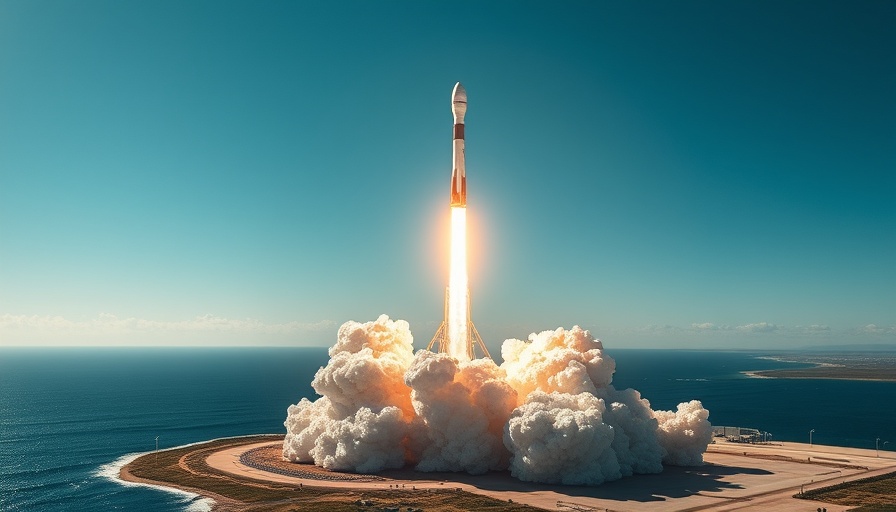
SpaceX Continues Its Starlink Expansion with Latest Launch
In a significant step forward for global internet access, SpaceX launched a stack of 27 Starlink satellites into orbit on March 26, 2025, from Vandenberg Space Force Base in California. This successful deployment adds to the existing fleet of over 7,100 satellites, forming a comprehensive mesh network noted for its high-speed, low-latency internet services.
The Falcon 9 rocket, designated for the Starlink 11-7 mission, lifted off at 6:11 p.m. ET (2211 GMT). Approximately eight minutes post-launch, the rocket’s booster B1063 smoothly landed on the droneship 'Of Course I Still Love You,' stationed in the Pacific Ocean. This marked the 24th flight and landing for the experienced booster, which has become a reliable asset for multiple Starlink missions, including its last flight in January of this year.
How Starlink is Changing Internet Access
The 27 new satellites will enhance the already extensive Starlink network, providing vital internet services to remote and underserved areas across the globe. As the demand for reliable internet continues to grow, especially amidst the digital shift triggered by the pandemic, the importance of initiatives like Starlink has never been more evident.
According to satellite expert Jonathan McDowell, the expanding network not only underscores SpaceX’s commitment to connectivity but also reveals the potential for satellite-based internet to overcome traditional challenges like geographic barriers faced by conventional ISPs. Low-Earth orbit (LEO) satellites like those deployed by SpaceX offer improved latency and higher speeds, compared to their geostationary counterparts.
Challenges and Future of Space-Based Internet
Despite the undeniable benefits, the rapid deployment of Starlink's satellite network has raised concerns regarding orbital congestion and space debris. With thousands of satellites in orbit, the risk of collisions increases, prompting discussions on effective regulatory measures for sustainable space activities.
Experts recommend that governments and international organizations develop stronger frameworks to manage space debris and satellite traffic, ensuring the long-term viability of space-based technologies. As such, addressing these challenges could pave the way for future innovations in satellite communications.
Innovation at the Forefront of Space Exploration
SpaceX’s accomplishments with the Starlink program not only showcase their engineering prowess but also reflect broader trends in technology and innovation. The balance between expanding access to critical services while responsibly managing space resources will be a defining challenge for the upcoming era of space exploration.
As audiences around the world eagerly await advancements in space technology, events like this launch serve as reminders of the bold innovations paving the way for our connected future. For those interested in technological advancements, SpaceX's ventures into the unknown illustrate what innovative thinking can achieve.
 Add Row
Add Row  Add
Add 




Write A Comment